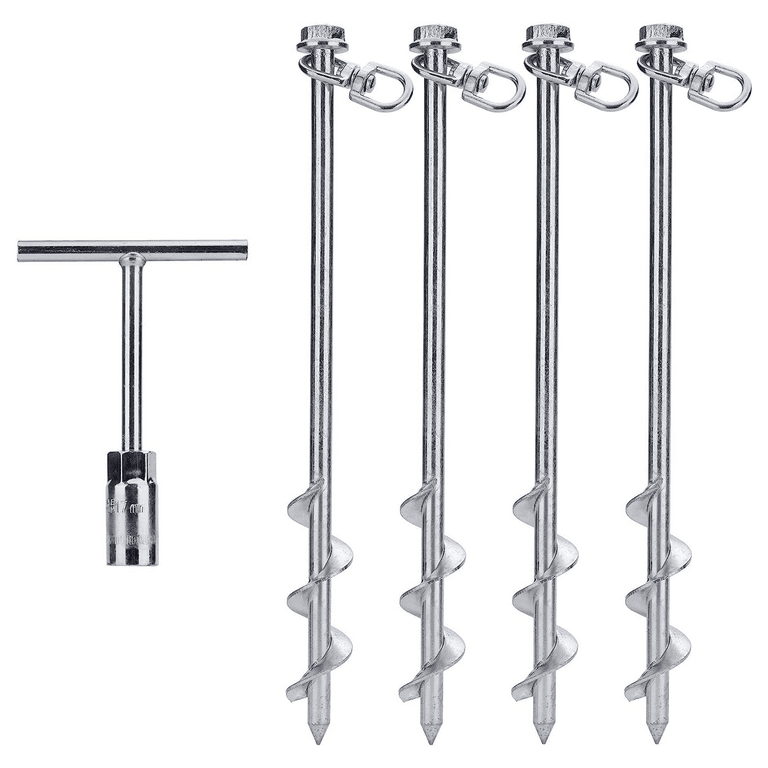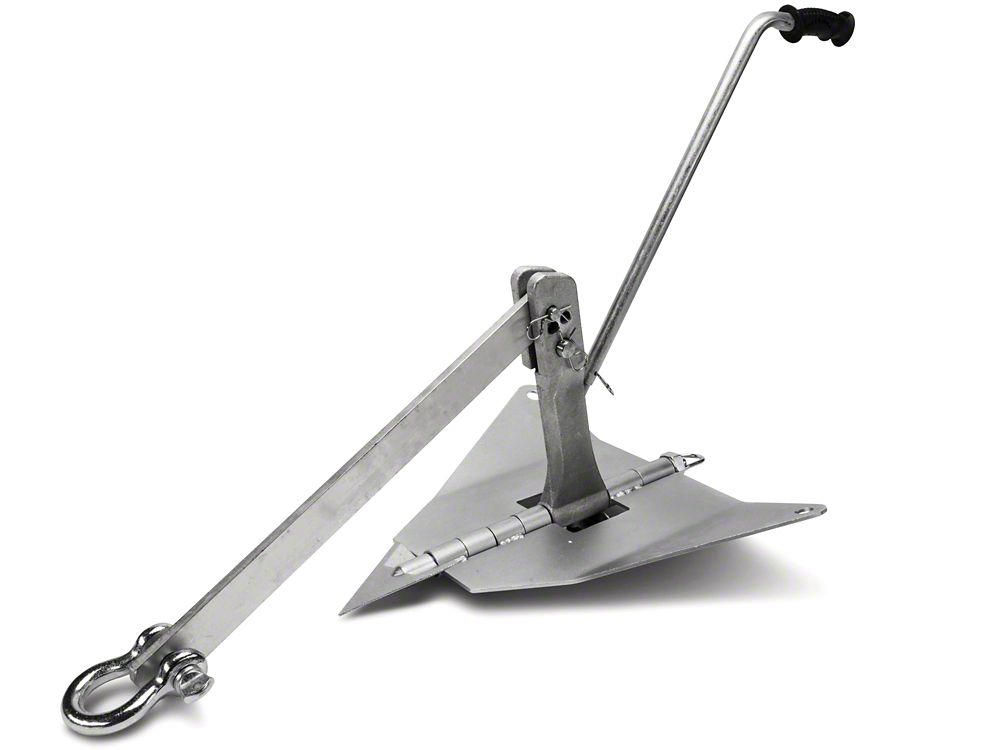Why You Should Use a Strong Ground Anchor for Maximum Protection
Wiki Article
Check Out the Various Types of Ground Support for Your Following Project
When getting started on a building or landscaping task, recognizing the numerous kinds of ground anchors readily available is important to ensuring both stability and sturdiness (Ground Anchor). From auger supports, which succeed in diverse dirt problems, to stake anchors designed for momentary installments, the options are various. In addition, concrete and screw anchors present unique advantages in particular situations, while deadman anchors are customized for applications requiring resistance to lateral forces. The option of an appropriate anchor kind can considerably influence the general success of your job, triggering additional exploration right into their corresponding advantages and applications.
Auger Anchors
Auger anchors are a popular selection in different building and construction and landscape design projects as a result of their distinct style and efficient anchoring abilities. These supports include a helical screw-like shaft that is driven right into the ground, allowing for a steady and protected hold. The spiral layout assists in simple installation and takes full advantage of resistance versus lateral forces, making auger anchors specifically reliable in applications such as fencing, momentary frameworks, and disintegration control.The installation procedure of auger anchors is reasonably simple. They can be manually or mechanically mounted, depending on the dimension and needed deepness. This flexibility enables for their use in varied soil problems, from sandy to clayey surfaces. Auger supports can be quickly removed and reused, which includes to their cost-effectiveness and sustainability.
Among the considerable advantages of auger anchors is their ability to distribute lots evenly throughout the surrounding dirt, lowering the threat of soil disturbance and reducing ecological impact. Additionally, they are much less susceptible to loosening or heaving gradually compared to typical anchoring methods. Consequently, auger anchors are an exceptional option for tasks calling for reputable and long lasting anchoring remedies.

Stake Anchors
When it pertains to securing structures in a range of outside applications, stake supports use a straightforward and trusted service. These anchors are commonly created from sturdy products such as steel or aluminum, developed to withstand ecological anxieties while giving optimal security. Their basic design enables fast setup, making them an optimal selection for irreversible or momentary anchoring requirements.Risk anchors are especially valuable in safeguarding camping tents, canopies, and other light-weight structures versus wind and weather condition. They function by being driven right into the ground at an angle, producing a strong hold that stands up to pull-out pressures - Ground Anchor. The performance of risk supports relies on a number of variables, including dirt kind, moisture content, and the angle of installment
For added safety and security, many stake supports feature attachment factors for straps or ropes, permitting tension adjustments as required. In applications such as landscape design or construction, they can successfully support tools or structures on irregular terrain. Overall, risk anchors give a affordable and functional solution for safeguarding different outside setups, making them a favored selection for service providers and DIY enthusiasts alike.
Concrete Anchors
Concrete anchors supply a robust solution for securing frameworks to concrete surfaces, making sure stability and safety and security in different applications. These supports are necessary for jobs varying from residential building and constructions to large-scale commercial setups. They come in different kinds, consisting of expansion supports, glue anchors, and undercut supports, each developed for specific lots needs and environmental conditions.
Glue anchors make use of high-strength epoxy or resin to bond the support to the concrete, using superior load-bearing capabilities, specifically in fractured concrete situations. Undercut supports develop an one-of-a-kind form within the concrete, supplying extraordinary holding power, especially in applications where tensile tons are prevalent.
Picking the suitable concrete support includes considering elements such as the weight of the load, the problem of the concrete, and environmental problems. Correct installation techniques are vital to guarantee ideal efficiency and reliability. When performed properly, concrete supports substantially enhance the architectural integrity of numerous projects, making them essential in modern building practices. Understanding the details needs of your job will help in choosing the ideal kind of concrete anchor for the job.
Screw Anchors

Screw supports are a functional fastening remedy that can be successfully utilized in a variety of applications where standard concrete supports may not suffice. These anchors contain a helical layout that allows them this post to be conveniently driven into the ground, making them optimal for use in dirt and various other substratums. Their unique framework offers excellent holding power and resistance to pull-out forces, making them ideal for various jobs, from landscaping to structural support.
Among the main advantages of screw supports is their convenience of installment. They require very little tools and can usually be set up without the requirement for excavation, which saves both time and labor expenses. Additionally, screw supports can be removed and recycled, supplying a lasting service for short-lived applications.
Screw anchors are specifically valuable in areas where soil problems are challenging, such as loosened or sandy soils. Their ability to be set up at varying depths permits customization based on particular task demands. In general, screw anchors give a efficient and trusted securing method, making them an exceptional selection for designers and specialists seeking efficient solutions for their projects.
Deadman Anchors
Deadman supports act as a durable remedy for supporting frameworks in tough conditions, especially where traditional securing techniques might fail. These supports contain huge, hefty things hidden underground, which create resistance versus lateral pressures. The design generally involves a horizontal element, such as a block of concrete or a steel plate, hidden in the soil, to which straps or cords are attached.The efficiency of deadman supports depends on their ability to distribute loads over a larger dig this area, minimizing the risk of failure in unsteady dirt conditions. They are especially helpful in applications such as retaining wall surfaces, temporary frameworks, and incline stablizing, where soil motion can endanger the honesty of the structure.
Installation of deadman anchors calls for cautious preparation to ensure they are positioned at the appropriate depth and orientation, maximizing their load-bearing ability. While they may call for more labor and material than light-weight anchors, their dependability in adverse conditions makes them invaluable for long-lasting tasks. Deadman supports are flexible you could look here and can be adjusted to different applications, making them a best option for designers encountering one-of-a-kind challenges in their projects.
Conclusion
Auger anchors succeed in diverse soil conditions, while stake anchors suit short-term applications. For concrete surface areas, expansion and sticky anchors give reliable choices, and screw anchors offer adaptability in tough terrains.Additionally, concrete and screw anchors present one-of-a-kind benefits in details circumstances, while deadman anchors are tailored for applications requiring resistance to side forces - Ground Anchor.Auger supports are a preferred selection in numerous construction and landscape design jobs due to their special style and effective securing abilities. They come in various kinds, consisting of development supports, sticky anchors, and undercut anchors, each created for specific lots requirements and ecological conditions
Sticky anchors use high-strength epoxy or material to bond the anchor to the concrete, providing exceptional load-bearing capacities, specifically in fractured concrete scenarios. On the whole, screw supports give a trusted and efficient securing method, making them an exceptional choice for professionals and designers seeking effective solutions for their tasks.
Report this wiki page